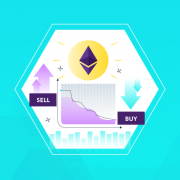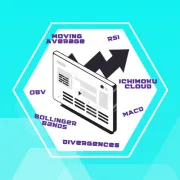In the world of trading, many factors come to play in driving a trader’s decision in the market. But to become a successful trader, you have to follow some strategies to guide your choices. Trading strategies keep traders firm in their principles and prevent careless decisions driven by emotions. This article will be digging deep into the top 5 trading strategies you can follow.
Article summary
What is a trading strategy?
Trading strategies are a set of techniques followed by traders to make profitable returns on their investments. Simply put, trading strategies are rules to follow when making trading decisions.
It is no news that many traders in the stock market tend to make decisions out of panic especially when they sense a change in price levels. This is often associated with the disposition effect. The disposition effect occurs when investors sell assets of a higher value and keep assets with depreciating value. Trading strategies exist to eliminate such problems giving rise to following a set of rules in the market regardless of news or personal emotions.
The provision of different strategies ensures that each type of investor can have a particular technique that suits them. Trading strategies are dependent on various factors like portfolio diversification, tax, leverage, and market capitalization, among others.
Top 5 trading strategies
Here are the top 5 most popular trading strategies you can employ:
1. Day trading strategy
What is a day trading strategy? A day trading strategy involves the buying and selling of securities within 24 hours. This type of trading strategy is short-term as profit is made due to small movements in price in under 24 hours. A simple day trading strategy you can use is buying the dip. This entails buying an asset at a low price and selling when there is an increase in value.
Note that day trading strategies are not only used in stocks trading but also crypto trading. Similarly, crypto day trading entails that crypto assets are traded in under 24 hours. Since crypto is very volatile, this method could yield profitable returns or set you up for a great risk. Hence, you have to carefully weigh the options before employing this technique.
Here are the pros and cons of day trading strategy:
- It offers protection from overnight risk.
- The volatility of day trading can yield profitable returns.
- Availability of multiple strategies.
- Day trading involves constant monitoring since returns are made within a short period.
- Like many short-term trades, it is very risky.
- A high level of research and knowledge is required.
2. Swing trading strategies
What is a swing trading strategy? A swing trading strategy is a speculative strategy that centers on making smaller returns over a short timeframe. This strategy makes use of technical analysis to identify market entry and exit opportunities. Technical analysis is a common tool in trading used for making predictions in the market. It employs previous market data and charts to foresee a possible outcome to occur in the market.
Unlike day trading strategies, swing trading could last from days to months so you don’t have to constantly monitor the market. For this reason, it is often seen as an easier alternative to other demanding forms of trading.
A high probability swing trading strategy would be the obvious no-brainer buy low and sell high in an uptrend, buy high and sell low in a downtrend. This is the fundamental rule of trading. You can look at it from the standpoint of cultivating cattle. You buy them when they are young and tender and sell them when they are mature at a higher price. However, the reverse is the case in a downtrend. Downtrends are characterized by the decrease in the price action of a security with time. In this case, an investor sells securities at a lower value than it was bought as the price action decreases thereby making a loss.
Here are the pros and cons of swing trading:
- It does not require as much time and attention.
- Sufficient profit can be derived from a single trade.
- Swing trading enables easier market analysis leading to more relaxed decisions.
- Since technical analysis is a very important factor, a wide knowledge has to be involved.
- Overnight risks can be a threat as the market could make a drastic turn while you are asleep.
- Capital is tied a lot longer than day trading.
3. Scalping Trading Strategy
What is a scalping trading strategy? A scalping trading strategy is a technique that focuses on making returns from small fluctuations in the market and reselling at a fast rate. To properly understand this concept, we will be digging into what scalping means.
What does scalping mean in trading? Scalping involves making as many profits as possible with high trading volumes. Although profits may be relatively small, the trading of many securities at a fast rate could account for its accumulated high returns.
Scalping trading is a very competitive space that requires immense discipline and attention. A huge loss could destroy all the profit a scalper has previously worked hard to make. Hence, the goal in scalping is to keep profits relatively higher than losses. Market making is a scalping stock trading strategy used in the market. In this strategy, scalpers simultaneously place a bid and offer on a stock. This method is highly competitive and difficult to keep up with as scalpers have to compete with market makers. Another scalping strategy requires buying several securities and selling at a slight price movement.
We should not neglect the fact that scalping has a high risk and can severely damage a trader at a wrong move. Suppose a trader does not have a stop-loss order or an exit strategy, they might face serious risks. This begs the question: do scalp trading strategies work across markets? The answer is yes! Scalping strategy can be very beneficial if you are well equipped with exit strategies.
Here are the advantages and disadvantages of scalping:
- Scalping can yield very high returns with the right exit strategies.
- It allows for the trading of several securities daily.
- High movement in the market is not a cause for attention in scalping. This strategy centers on smaller timeframes with a relatively smaller individual trading profit.
- Short-term predictions can be extremely difficult.
- A consistent profit is needed to yield great results.
- Regular monitoring is required.
4. News trading strategy
What is news trading? News trading is a technique of trading where press releases, social and economic announcements are used to make investment decisions. The news plays a huge role in market trends which is why traders use news announcements to make trading moves. A news trader is always up to date with the news and economic reports because any slight announcement could affect the market drastically. But the effect of the news on the market is often short-lived so a trader has to fully utilize the news trading strategy in the moment.
For a trader to be successful in news-based trading, they need to understand how to parse news to build a trading strategy. This involves planning strategies beforehand and recognizing if the announcements are worth acting on.
Here are the pros and cons of the news trading strategy:
- News trading yields high profit since the effect of the news on the market can be very influential.
- Trading the news does not last for a long time. Hence, monitoring one trade is not necessary as you will exit quite fast.
- News trading can be carried out automatically.
- A trader might make wrong predictions leading to a loss.
- Some brokers deceive traders on news announcements to fuel transactions.
- The opportunity to trade the news does not come frequently.
5. Buy and Hold trading strategy
What is the buy and hold trading strategy? The buy and hold trading strategy deals with buying securities at a low price and keeping them for months or years before selling them. It is known to be a long-term and safer form of investment. The buy and hold trading strategy is a preferable form of investment for investors that don’t have time to constantly monitor the market or engage in technical analysis.
Here are the pros and cons of the buy and hold trading strategy:
- The buy and hold strategy reduces risk. Since there is enough time to manage your portfolio and work on strategies, the risk is reduced.
- It offers lesser trading costs as frequent trading is minimized.
- Frequent monitoring and attention are not needed.
- It takes time to yield profit.
- Liquidity is limited since the ability to withdraw money for short periods is halted.
- It does not give a trader the chance to be flexible.
Now that you understand the different trading strategies, you can implement the one that suits you in your investment. Deep understanding is needed before employing any strategy so this article about top 5 most popular trading strategies can always be a useful tool. Ensure to weigh the pros and cons before delving into trading strategies so you won’t be found wanting.

Ebiere Watchman is a prolific writer specialized in web 3.0 and finance. Ebiere’s experience includes research projects, sales copywriting, and storytelling. She prides herself in crafting impeccable content to drive mass adoption in cryptocurrency.








